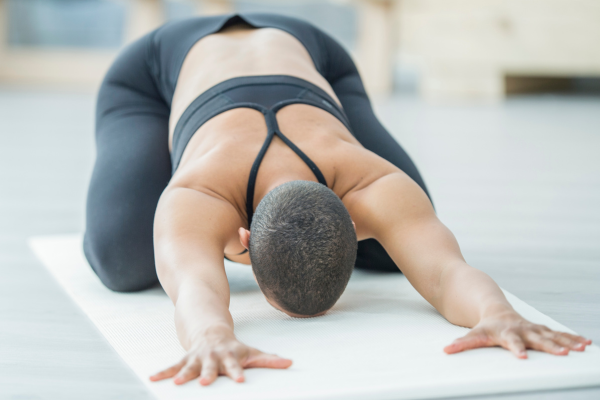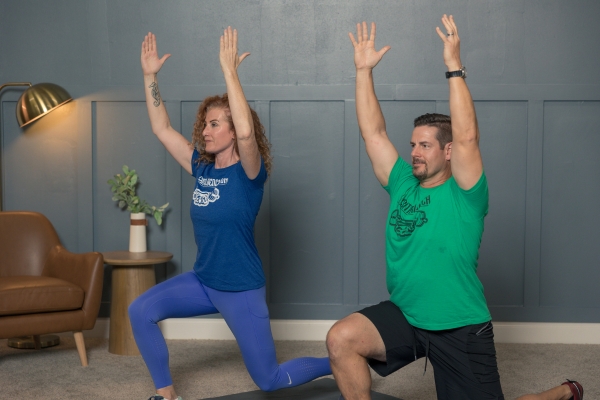For too many of us, stress is a constant, unwelcome guest in our lives.
The endless barrage of emails.
The incessant “pings” of our phone notifications
The relentless pressure to keep up with everything and everyone.
Stress has woven itself into the fabric of our daily existence.
But it’s not just the digital deluge and societal expectations that crank up our stress levels.
Many of us juggle work commitments with family responsibilities, personal goals, and the pursuit of a semblance of social life, all while trying to maintain our health and wellbeing.
This balancing act can leave us feeling like we’re constantly running on a treadmill that’s speeding up, with no off switch in sight.
In the middle of all this craziness, there’s something peaceful and steady that’s helping people find calm and get refreshed.
This old way of doing things, which combines being mindful and getting your body moving, invites us to take a break, take a deep breath, and get ourselves back in balance.
Here’s how yoga can help you go from stressed to serene.

How Yoga Melts Away Stress and Restores Calm
Yoga isn’t just about stretching and holding poses; it’s a journey into mindfulness that commands your undivided attention, sweeping away the clutter of daily worries and stress.
When you’re focused on maintaining balance in the Tree Pose or syncing your breath with movement in a Vinyasa flow, there’s simply no space left for stressing over your to-do list or replaying yesterday’s conversations.
This deep immersion in the present moment acts as a powerful antidote to stress, helping to dissolve it as you breathe and move.
The Science Behind Relaxation
Yoga does more than just mentally transport you to a place of peace; it has tangible effects on your body’s physiology.
By engaging in yoga, you’re effectively flipping a switch in your nervous system from the adrenaline-pumped “fight or flight” response, which is all too often triggered by modern life’s demands, to the serene “rest and digest” mode.
This shift is crucial for deep relaxation and healing, allowing your body to recuperate and renew itself, away from the pressures of everyday stress. [1]
Elevating Mood Naturally
The benefits of yoga extend into the realm of neuroscience with studies highlighting its ability to increase levels of Gamma-Aminobutyric Acid (GABA) in the brain. [2]
GABA is a neurotransmitter that plays a key role in regulating mood and anxiety levels.
Elevated GABA levels are associated with a greater sense of calm and well-being, making yoga an effective, natural method for enhancing mood and combating anxiety.
Cultivating Inner Strength
Moreover, the practice of yoga builds more than just physical strength and flexibility; it fortifies your mental resilience.
Each time you come to the mat, you’re not just working out your body; you’re also training your mind to navigate life’s challenges with grace and composure.
Regularly integrating yoga into your life enhances your ability to remain centered in the face of adversity, akin to developing a mental muscle that grows stronger and more adept at managing stress over time.

Making Yoga a Part of Your Everyday
Embracing yoga as a daily practice can transform it from a mere exercise routine to a profound lifestyle change, offering peace and balance amidst our hectic lives.
Making yoga a consistent part of your day doesn’t require a massive overhaul of your schedule; rather, it’s about weaving it into the fabric of your daily activities with intention and mindfulness.
Here are some practical tips to help you embed yoga into your everyday life:
Start Small and Grow
Begin with just a few minutes a day.
A short morning session of sun salutations can invigorate your body and set a positive tone for the day ahead.
If mornings are too rushed, consider a brief evening routine to unwind.
The key is regularity, not duration.
Over time, as you begin to experience the benefits, you’ll naturally find yourself dedicating more time to your practice.
Designate a Yoga Space
Create a dedicated space for your yoga practice.
It doesn’t have to be large or elaborate—a corner of your bedroom or living room that can comfortably fit a yoga mat is sufficient.
This designated space becomes your personal retreat, signaling to your brain that it’s time to shift from the day’s hustle to tranquility and mindfulness.
Incorporate Yoga into Breaks
Use short breaks throughout your day for quick yoga stretches or breathing exercises.
Even a few minutes of deep breathing at your desk or gentle stretches during a break can significantly reduce stress and boost your energy levels.
These mini-sessions help maintain a connection to your yoga practice and its calming effects throughout the day.
Make Use of Technology
Leverage technology to help integrate yoga into your daily routine.
Numerous apps offer guided yoga sessions ranging from 5 to 60 minutes, making it easy to find a practice that fits into your schedule.
Additionally, setting reminders can encourage you to take regular yoga breaks, helping to cultivate a habit.
Connect with a Community
Joining a yoga class or group, either in-person or virtually, can provide structure and motivation.
Being part of a community offers support and accountability, making it easier to maintain your practice.
On days when you’re practicing alone, knowing you’re part of a wider group sharing the same journey can be incredibly motivating.
Be Flexible and Kind to Yourself
Remember, the goal of integrating yoga into your daily life is to enhance your well-being, not to add another item to your to-do list.
Some days, a full practice might not be feasible, and that’s okay.
Be flexible in your approach and kind to yourself.
Even on the busiest days, a few mindful breaths or a single pose can keep the essence of your practice alive.

Wrap-Up and Key Points
Incorporating yoga into your daily routine doesn’t require monumental shifts—sometimes, it’s as simple as a few minutes of deep breathing at your desk or a quick stretch between meetings.
The key is consistency and the intention to carve out moments of calm and centeredness in your day.
So, the next time you find yourself overwhelmed by the pace of modern life, remember that the soothing, restorative embrace of yoga is just a few breaths away.
References
- Shohani M, Badfar G, Nasirkandy MP, Kaikhavani S, Rahmati S, Modmeli Y, Soleymani A, Azami M. The Effect of Yoga on Stress, Anxiety, and Depression in Women. Int J Prev Med. 2018 Feb 21;9:21. doi: 10.4103/ijpvm.IJPVM_242_16. PMID: 29541436; PMCID: PMC5843960.
- Streeter CC, Gerbarg PL, Brown RP, Scott TM, Nielsen GH, Owen L, Sakai O, Sneider JT, Nyer MB, Silveri MM. Thalamic Gamma Aminobutyric Acid Level Changes in Major Depressive Disorder After a 12-Week Iyengar Yoga and Coherent Breathing Intervention. J Altern Complement Med. 2020 Mar;26(3):190-197. doi: 10.1089/acm.2019.0234. Epub 2020 Jan 14. PMID: 31934793; PMCID: PMC7074898.





